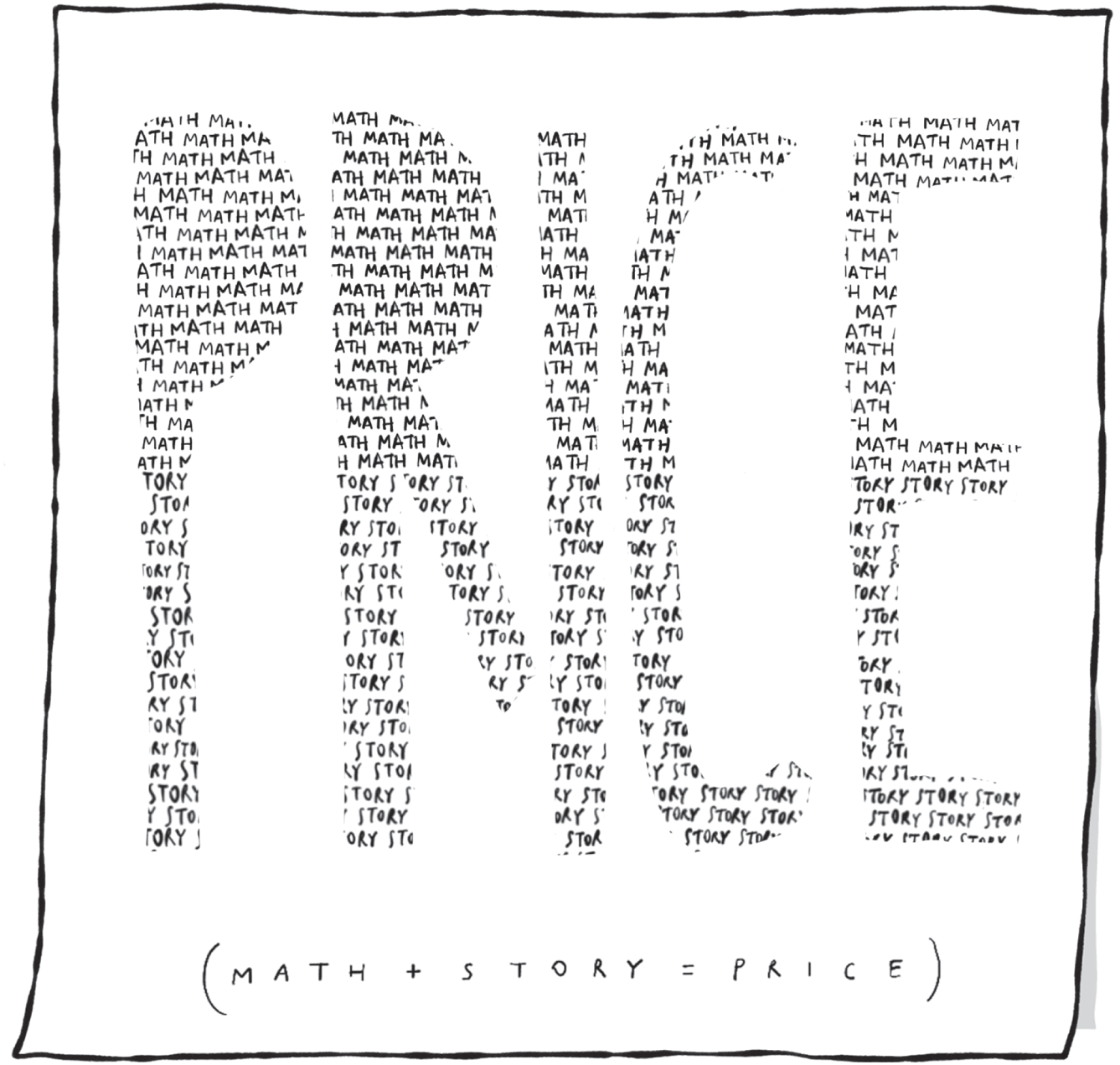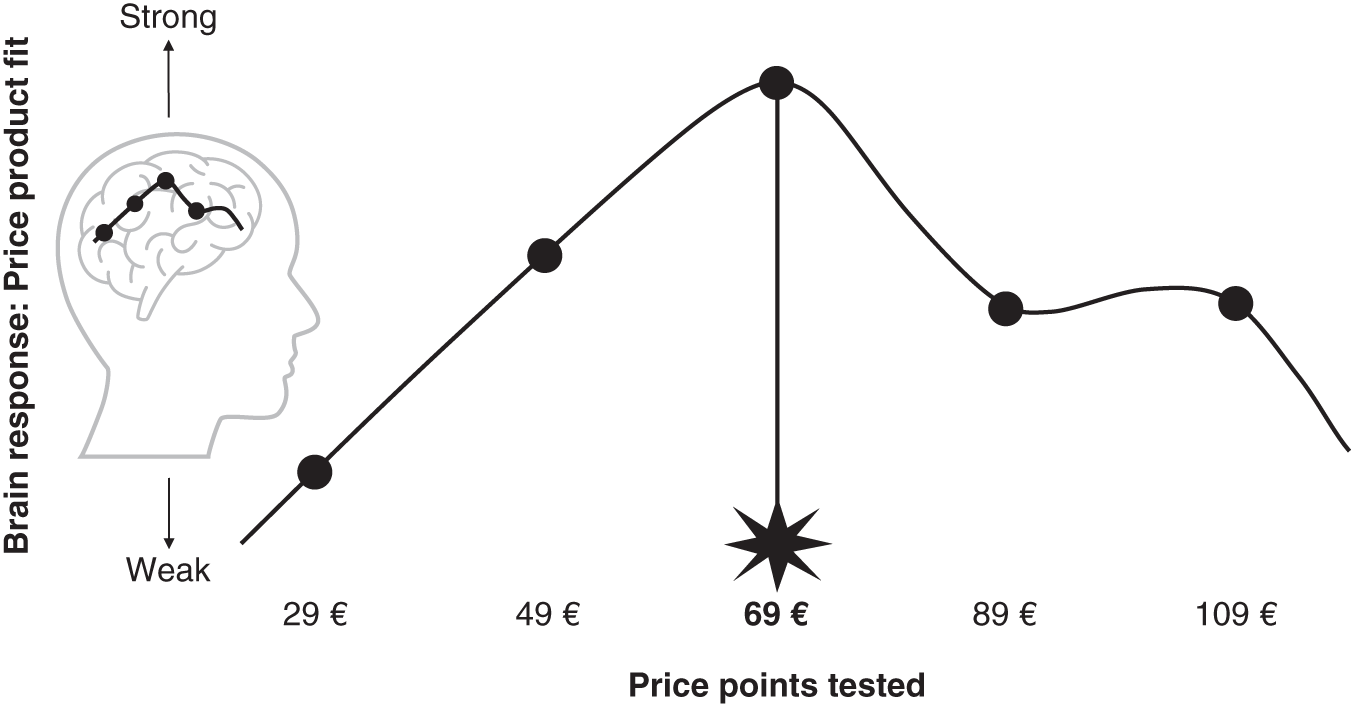Chapter 5
Price = Maths + Story
We would not be surprised if someone is thinking right now: ‘I don't sell wine and I don't sell coffee, so what does all this science have to do with me?’
To answer that question, we turn first to Nobel Prize winners George Akerlof (2001) and Robert Schiller (2013), who wrote a book together in 2009 called, Animal Spirits: How Human Psychology Drives the Economy, and Why It Matters for Global Capitalism. While they focus on macroeconomics, their comments on the importance of psychological aspects such as trust, fairness, and confidence are just as salient for day-to-day business. They write that these aspects ‘are real motivations for real people. They are ubiquitous. The presumption of mainstream macroeconomics that they have no important role strikes us as absurd.’1
In other words, behavioural economics, psychology, and neuroscience apply to anyone who is selling, buying, or negotiating. We are all humans and thus subject to the same forces and effects. The concepts we have described so far – and the ones we will introduce throughout the rest of Parts II and III – reflect natural human tendencies with respect to prices and buying decisions. While some of our specific recommendations apply more to salespeople in larger organizations, most will apply just as much to independent professionals and individual business owners. They apply regardless of the industry, product, or service or the size of your business.
For a long time, classical economics ignored those universal tendencies, preferring instead to view our species as homo economicus: the efficient, economizing individuals who always act rationally in their own self interests. Homo economicus is the perfect incarnation of System 2, but many groundbreaking insights from the past few decades have exposed homo economicus as an incomplete and flawed model. More than half of the managers in the Swedish survey we cited in Chapter 1 said that intuition either partially or completely guides their business decisions. The Austrian economist Ludwig von Mises once wrote, ‘It did not escape even the classical economists that the economizing individual as a party engaged in trade does not always and cannot always remain true to the principles governing the businessman, that he is not omniscient, that he can err, and that, under certain conditions, he even prefers his comfort to a profit-making business.’2
The magazine The Atlantic went one step further in an article with the headline ‘Richard Thaler wins the Nobel in economics for killing homo economicus.’ The article claimed that ‘Thaler's career has been a lifelong war on homo economicus, that mythical species of purely rational hominids who dwell exclusively in the models of classical economic theory.’3 Doubts about the predominance of rational economic thinking predates Thaler and others by several decades. In an effort to describe how people's emotional decisions can move markets, John Maynard Keynes coined the term ‘animal spirits’ in 1936, the same phrase that Akerlof and Schiller co-opted for their book.4
Homo economicus lingers as an undead creature, still casting some influence, but no longer viewed as the dominant or even all-powerful force. That means that purely rational beings are nowhere to be found on either side of a Zoom call or around a business negotiating table. Let's keep that in mind as we leave the world of wine and coffee and look at a story about prices in a large corporation.
Glasswhere, an international supplier of laboratory equipment, wanted to launch a line of heavy-duty chemical gloves to complement its existing assortment of lab materials.5 The managers didn't know a lot about the market for gloves, so they turned to catalogues and websites to find the prevailing list prices and get some orientation. That is when they hatched the idea for an experiment.
Working together with a couple of its leading distributors, Glasswhere conducted in-market tests with different price points to determine the launch price for the rollout. These tests resemble the CalTech wine experiment, but instead of self-reporting their pleasure with the gloves at a given price point, the lab-equipment buyers expressed their satisfaction (and presumably, their pleasure) by paying actual money for the gloves. Glasswhere learned that, on average, its own branded gloves could command a premium of at least 10% above what Ergz, the market leader, was charging. Focus groups and small-scale surveys in other markets confirmed the findings.
What makes these findings remarkable? The gloves Glasswhere tested under their own brand name were not only worth 10% more than the gloves made by Ergz, the market leader and their new main competitor. They actually were Ergz's gloves. This experiment underscores the interconnection between prices and the stories behind them. In this case, the brand carried the story. Brands serve as a powerful shorthand for the context that a company creates about itself, reinforced by the first-hand experience of customers. Stories and prices are inseparable in any buying decision, and there will always be irresistible combinations of them.
In essence, the brand acts like a magic combination of words and images that is capable of triggering positive sensations in buyers. This applies equally to B2B products as it does to a pair of athletic shoes, a fashionable handbag, or even restaurants, which are fascinating real-life laboratories for understanding the power of the System 1 aspects of pricing. Writing about the brand-name power of Scottish chef Gordon Ramsay, The Guardian said that ‘Ramsay realized the opinions of foodies didn't matter. If his profile was high enough, if he spent enough airtime pushing his brand values of fanatical attention to detail and uncompromising standards, his presence in the kitchen made no difference to the number of people flocking to his restaurants.’6 People bought and tasted Ramsay's brand, not the food he personally cooked.


Figure 5.1 Prices are emotional triggers that are inseparable from stories. The ‘feel-good’ price is the highest price that still elicits a pleasant, positive response in the buyer's mind
All of this cutting-edge science supports our important claim that price is a sensorial, emotional, and thus ultimately a neurobiological experience for all humans. No matter what product or service you are selling or buying, the price is so much more than a mere number. Prices are the outcomes of stories with the power to steer the full range of human emotions: fear, anger, happiness, elation, euphoria, disappointment, resentment, jealousy, and dread, to name a few. Prices can make you feel pleasure and pain.
In Figure 5.1 the ‘feel-good’ price for the buyer is €69. However, traditional sales training – derived from the classic conventions about how prices work – almost guarantees that a salesperson will fall short of the feel-good price, and in many cases drift even further away from it as the customer relationship continues. The reason is that this classical training overemphasizes System 2 and largely ignores System 1. It operates under the classic definition of ‘brain power’, which is the intellectual capacity to solve problems. This definition neglects the other dimensions of brain power – and often the predominant ones – which include situational awareness, emotions, and the refined intuition that allows someone to turn intuitive behaviours into intentional ones.
The overarching conclusion from numerous experiments – both in well-controlled studies and semi-formal observations – is that these two sides of brain power exist within every buyer–seller relationship and likewise within every negotiation between those two parties.
These two sides also exist within the stories themselves. Of course, the stories include the differentiation and value arguments that derive from your System 2 activity, but often overlook the pre-conscious and emotional stories embedded invisibly in the negotiation process. A price may ultimately be a number, but the creation and defence of that number – based on the full forceful combination of System 1 and System 2 – is what makes pricing an essential skill to master in the Invisible Game.
Notes
- 1. Akerlof, G. and Shiller, R.J. (2009). Animal Spirits: How Human Psychology Drives the Economy, and Why It Matters for Global Capitalism. Princeton, NJ: Princeton University Press.
- 2. French, D. (2017, October 14). Mises killed homo economicus long before Thaler. Mises. https://mises.org/wire/mises-killed-homo-economicus-long-thaler (accessed 27 May 2022).
- 3. Thompson, D. (2017, October 9). Richard Thaler wins the Nobel in economics for killing homo economicus. The Atlantic. https://www.theatlantic.com/business/archive/2017/10/richard-thaler-nobel-economics/542400/ (accessed 27 May 2022).
- 4. Smith, S.V. and Garcia, C. (2019, June 14). Animal Spirits. NPR. https://www.npr.org/2019/06/14/732876763/animal-spirits?t=1653657652619 (accessed 27 May 2022).
- 5. Glasswhere is a fictitious name, and the circumstances have been altered to anonymize this example.
- 6. Hayward, T. (2009, March 5). A successful brand - but of what? The Guardian. https://www.theguardian.com/lifeandstyle/wordofmouth/2009/mar/05/gordon-ramsay-restaurant-brand (accessed 27 May 2022).
